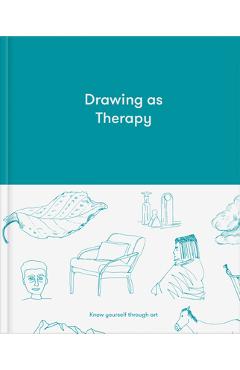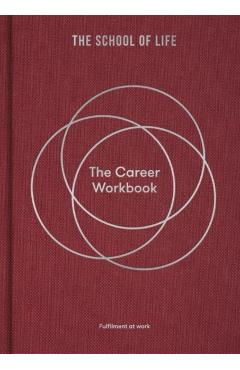Drawing as Therapy: Know Yourself Through Art - The School Of Life

Detalii Drawing as Therapy: Know Yourself
libris.ro
139.45 Lei
154.94 Lei
Self-help
The School Of Life
Drawing as Therapy: Know Yourself - Disponibil la libris.ro
Pe YEO găsești Drawing as Therapy: Know Yourself de la The School Of Life, în categoria Self-help.
Indiferent de nevoile tale, Drawing as Therapy: Know Yourself Through Art - The School Of Life din categoria Self-help îți poate aduce un echilibru perfect între calitate și preț, cu avantaje practice și moderne.
Preț: 139.45 Lei
Caracteristicile produsului Drawing as Therapy: Know Yourself
- Brand: The School Of Life
- Categoria: Self-help
- Magazin: libris.ro
- Ultima actualizare: 28-10-2025 01:22:05
Comandă Drawing as Therapy: Know Yourself Online, Simplu și Rapid
Prin intermediul platformei YEO, poți comanda Drawing as Therapy: Know Yourself de la libris.ro rapid și în siguranță. Bucură-te de o experiență de cumpărături online optimizată și descoperă cele mai bune oferte actualizate constant.
Descriere magazin:
A practical guide outlining the benefits of drawing as a therapeutic practice followed by 80 guided drawing exercises as an aid to self-understanding and fulfillment. When we\'re young, all of us draw; as we grow older, most of us stop. We come to see drawing not as a type of play, but as a craft or skill; one that we can do either well or (more usually) badly. But to see drawing in this way is to deny ourselves one of life\'s great pleasures, and to miss out on its profound psychological benefits. By allowing us to express ourselves creatively, and capture our thoughts and ideas on paper, drawing can be a form of therapy. Drawing as Therapy is a collection of playful, creative prompts and exercises that introduce us to the curative powers of drawing. Divided into eight chapters, they invite us to reflect on different aspects of our life and psyche - our personality, moods, memories and passions - by attempting to render them through art. In so doing, they can help us to discover hidden byways of our minds, find new perspectives on our difficulties, summon a state of calm, and begin a process of self-recovery and healing. The exercises won\'t teach you how to draw. Instead, they will teach you an entirely new way of thinking about drawing, where there is no such thing as failure or success, only self-discovery and, in the best sense, play. Drawing as a therapeutic practice - for any level - including 80 guided drawing exercises as an aid to self-understanding and fulfillment. When we\'re young, all of us draw. As we grow older, most of us stop. We come to see drawing not as a type of play, but as a craft or skill - one that we can do either well or not. But to see drawing in this way is to deny ourselves one of life\'s great pleasures, one with profound psychological benefits. By allowing us to express ourselves creatively, and capture our thoughts and ideas on paper, drawing can be a form of therapy. Drawing as Therapy is a collection of playful, creative prompts and exercises that introduce us to the curative powers of drawing. Divided into eight chapters, they invite us to reflect on different aspects of our life and psyche - our personality, moods, memories and passions - by attempting to render them through art. Through art, you can discover hidden byways of our minds, find new perspectives on our difficulties, summon a state of calm, and begin a process of self-recovery and healing. The exercises won\'t teach you how

Produse asemănătoare

Drawing as Therapy: Know Yourself Through Art - The School Of Life
![]() libris.ro
libris.ro
Actualizat in 28/10/2025
139.45 Lei

Drawing as Therapy: Know Yourself Through Art, Hardback/The School Of Life
![]() elefant.ro
elefant.ro
Actualizat in 26/10/2025
108.99 Lei
Produse marca The School Of Life

The School of Life Collected Essays: Reflections on Self-Knowledge, Emotional Maturity and Calm - The School Of Life
![]() libris.ro
libris.ro
Actualizat in 28/10/2025
195.25 Lei

The Career Workbook: Fulfilment at Work - The School Of Life
![]() libris.ro
libris.ro
Actualizat in 28/10/2025
139.45 Lei

The School of Life: A Job to Love: How to Find a Fulfilling Career - The School Of Life
![]() libris.ro
libris.ro
Actualizat in 28/10/2025
83.65 Lei

The School of Life: On Being Nice: A Guide to Friendship and Connection - The School Of Life
![]() libris.ro
libris.ro
Actualizat in 28/10/2025
83.65 Lei

The School of Life: Small Pleasures: What Makes Life Truly Valuable - The School Of Life
![]() libris.ro
libris.ro
Actualizat in 28/10/2025
83.65 Lei

The School of Life: Calm: The Harmony and Serenity We Crave - The School Of Life
![]() libris.ro
libris.ro
Actualizat in 28/10/2025
83.65 Lei